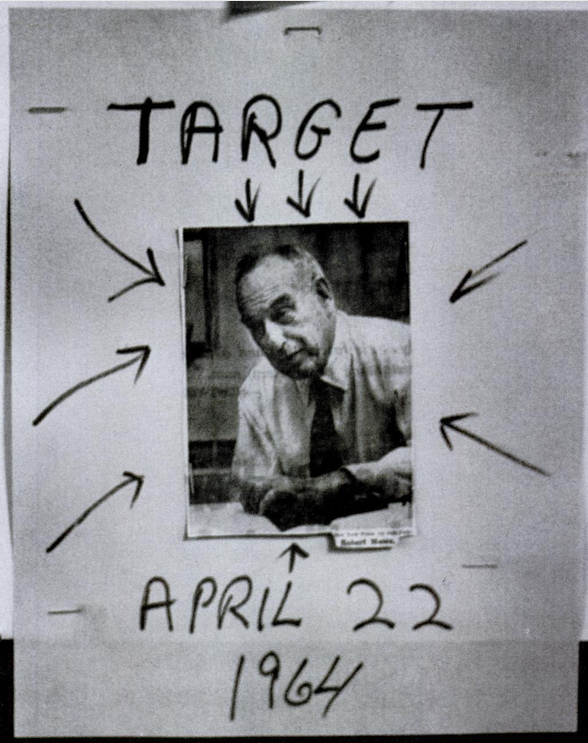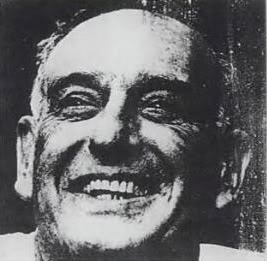
I was looking for the Life Magazine photo Andy Warhol used in the summer of 1964 to make his World’s Fair replacement mural, Robert Moses 25 Times, and this was not it.
It’s from “Throttle The Fair–the Public Be Damned,” an article that ran the week the Fair opened, in the April 24th issue. The photo is captioned, “The Victim”:
Only because he is the head of a huge extravaganza–the New York World’s Fair–is Robert Moses the target of militant Negroes. They are led by a 22-year-old zealot named Isiah Brunson, who, spelling out his threat last week, said, “We’re going to block every street that can get you anywhere near the World’s Fair–and give New York the biggest traffic jam it’s ever had. If people are made uncomfortable by it, good! Maybe they’ll get some idea how uncomfortable it is to be a Negro in this city.”
“Throttle The Fair–the Public Be Damned, LIFE, Apr. 24, 1964
Life is just being coy; there were many reasons for Blacks to protest against Moses. The Brooklyn Chapter of CORE, which Brunson chaired, had been protesting against discriminatory trade union hiring practices during construction of the Fair for more than a year. In addition to access to union jobs, Brooklyn CORE was calling for a citywide rent strike, and the investigation of police brutality.
Brunson proposed a stall-in, where thousands of Black drivers would run out of gas and block all the access roads to the World’s Fair on opening day. The city was worried enough about it, Life reported, that they hastily passed a law making it illegal to run out of gas. In the end, the stall-in did not shut down, or even slow down the Fair. But by deploying broader inconvenience, instead of targeted shame, the stall-in was a model for expanding awareness and the impact of a protest action beyond, say, an unaccountable and inveterate racist politico–or a biased white media outlet.

Anyway, the smiley Moses photo Warhol used came from a 1962 Life puff piece which, how did he land on that? did he have a clipping service? Did he go to the library topical guide? Holy smokes, October 22, 1962? Just weeks before Warhol getting the commission paperwork? What if a giant portrait of Moses was the *first* idea for the World’s Fair mural?
